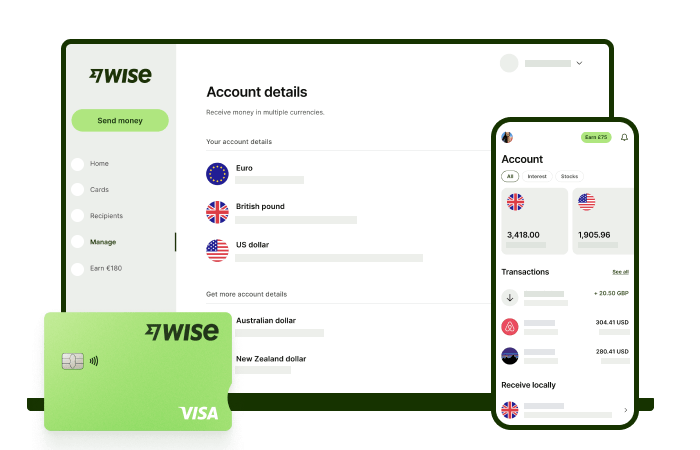IBAN Number: Find, check or calculate your IBAN
Find, check or calculate an IBAN number. Everything you need to get the right IBAN code for your transfer. Don't worry, we don't store or view any of the data you enter here.
Check an IBAN
Type it in here and we’ll tell you if it’s the right format.
Calculate an IBAN
Fill in the account details, and we’ll calculate the IBAN for you.
What is an IBAN number?
IBAN stands for International Bank Account Number. It’s an internationally-agreed code made up of up to 34 letters and numbers that helps banks to process transfers around the world.
Each set of characters represents a different detail for your bank account. You can see the breakdown of this IBAN number below.
Example of an IBAN in the United Kingdom
Where to find your IBAN
It's important that you use the right IBAN code when sending money. If you get it wrong, your bank might send your money to the wrong destination, or it may charge you for an invalid payment.
You can usually find your IBAN number by logging into your online banking, or checking your bank statement. You can also use the tools on this site.
It's important to remember that an IBAN being in the right format isn't guarantee that it exists. Or that it's the right IBAN for a particular account. You should always check it with your recipient or bank before sending or receiving a payment.
Calculate IBANIBAN examples by country
Each country has a different IBAN format. Find an example IBAN code for your country here.
| Country | IBAN example |
|---|---|
| GB29NWBK60161331926819 | |
| FR1420041010050500013M02606 | |
| DE89370400440532013000 | |
| IE29AIBK93115212345678 | |
| ES9121000418450200051332 | |
| PL61109010140000071219812874 | |
| IT60X0542811101000000123456 | |
| NL91ABNA0417164300 | |
| RO49AAAA1B31007593840000 | |
| PT50000201231234567890154 |
Routing numbers, SWIFT codes, BIC and IBANs – what’s the difference?
You’ll need a few details to send or receive a transfer – either domestically or internationally.
IBANs (international bank account numbers) identify individual bank accounts. They're issued by many banks in Europe, but banks elsewhere in the world are starting to adopt them as well.
Routing numbers help identify banks when processing domestic ACH payments or wire transfers. But only in the United States. You don't need one to make a payment to your friend in France, for example.
SWIFT codes, like routing numbers, also identify banks and financial institutions. This time for international payments. They're sometimes known as BIC codes.

